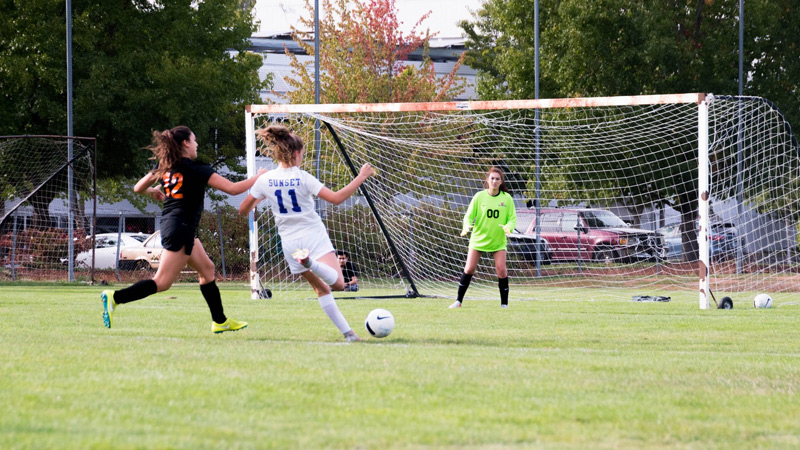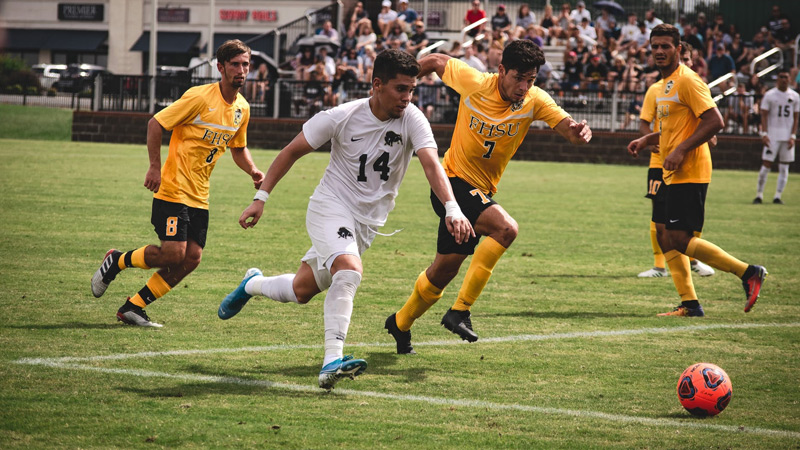Authority Soccer (authoritysoccer.com) is a participant in the Amazon Services LLC Associates Program, an affiliate advertising program designed to provide a means for sites to earn advertising fees by advertising and linking to Amazon.com. This site also participates in other affiliate programs and is compensated for referring traffic and business to them.
Rivalries are what we enjoy soccer for, but sometimes there are these friendly matches that seem to suck all of the fun out of the game.
However, a friendly game can even be held between two teams who share a history of rivalry in national and international competitions.
This means that even friendly matches can be fun to watch. What exactly is a friendly soccer match?
A friendly soccer match, or an exhibition match, is the term used for all soccer games that are not a part of competitive tournaments and leagues.
Friendly matches serve as a preparation for the upcoming competitive fixture, for both national and international teams.
Competitions are, undoubtedly, our favorite way of enjoying soccer, but the sport can also be highly entertaining when a friendly game is on.
This is why we’ve dedicated this article to friendly soccer matches and explaining the rules that make them similar and different from a regular, competitive soccer match. Enjoy the reading!
What is a friendly soccer match?
As briefly explained above, friendly soccer matches are the matches played without the competitive element that regular tournament games have.
Friendly matches can be played among teams that belong to the same national league, or they can be a way for two international teams to test each other’s strengths and weaknesses.
Most commonly, these games are not as exciting to watch as the competitive ones.
However, the fact that bitter rivals can clash in one, as well as the fact that friendly soccer games are played during the off-season when there’s nothing else to watch, prove that they can be the highlight of the season before it even starts.
It is a common misconception that friendly soccer matches are boring; they can be as, or even more, exciting than regular-season games.
What is the meaning of a friendly soccer match?

Friendly soccer matches are held when teams start preparations for the new season. Coaches commonly user-friendly matches to test our weird, experimental tactics that can later be used when the competition starts.
Another meaning behind friendly soccer matches is for coaches to try different player configurations, which means that these matches are an excellent way for new players to prove themselves and earn a spot on the team for the upcoming season.
Exhibition soccer matches also provide the fans with some form of entertainment during the offseason. Sometimes, friendly matches are organized as a means of raising money for charity.
Marking an occasion, such as a team’s anniversary is another reason why these games are played.
How long does a friendly soccer game last?
A friendly soccer game typically lasts for 90 minutes, just like a regular competition game. When a regular soccer game ends in a draw, extra time is commonly used to determine the winner.
What sets friendly soccer matches apart is the fact that there’s no extra time or penalties if the regular time ends in a draw.
When agreed upon, extra time can be used after the regular 90 minutes end in a draw, or the teams can proceed to penalties without the extra time.
However, this is a rare occurrence, as most teams are happy to go home with an even score in friendly matches, especially if they’re played to raise money for a cause or to mark an occasion.
How many substitutions are allowed in a friendly football match?

Substitutions are one of the key elements that regular and friendly soccer matches differentiate in. As most of us know, competitive soccer matches most commonly allow for 3 substitutions throughout the game.
Having in mind that friendly matches are held to test out strategies, prepare for the new season or a competition, or for some of the other reasons we listed previously, this rule is commonly changed:
Friendly soccer matches commonly allow for unlimited substitutions. In most cases, the teams will agree on the number of substitutes before the game starts.
If the game is played in honor of an event, it is not uncommon for every player from both teams to get a chance to play. This means that friendly football matches can have 10 or more substitutes per game.
How is a friendly soccer match different than a regular match?
There are a few key differences that set friendly and regular matches apart. Here are some of those main differences:
- Friendly soccer matches are played for 90 minutes, commonly with no added time or penalties.
- Friendly soccer matches commonly have unlimited substitutes.
- Playstyle in friendly soccer matches is much tamer than in regular matches.
- Referees are much stricter in some elements of friendly matches.
As the first two differences were already explained in the text above, let’s focus on the last two:
Friendly soccer matches have a different playstyle than regular matches.
Due to the nature of the game, players tend to avoid hard tackles and unnecessary risks that can get them or others injured when playing a friendly match.
As the name suggests, friendly matches should be played in a friendly manner, so the competitiveness we see during the regular season matches is commonly gone, or at least reduced to a minimum, in them.
Once again, due to the friendly nature of exhibition matches, referees tend to be much less forgiving about behavior that is tolerable in a more competitive environment.
Intentional fouls, risky tackles, and actions that jeopardize the well-being of players are not tolerated.
On the other hand, small fouls that would cause the referee to bring out the whistle in a regular game are commonly ignored in a friendly match.
Remember that it doesn’t matter who wins at the end of a friendly game. Both teams are there to test out strategies and slowly get back into the rhythm after a long off-season break.
We are there to enjoy the game, cheer our favorites on, and try not to get annoyed by their mistakes.

